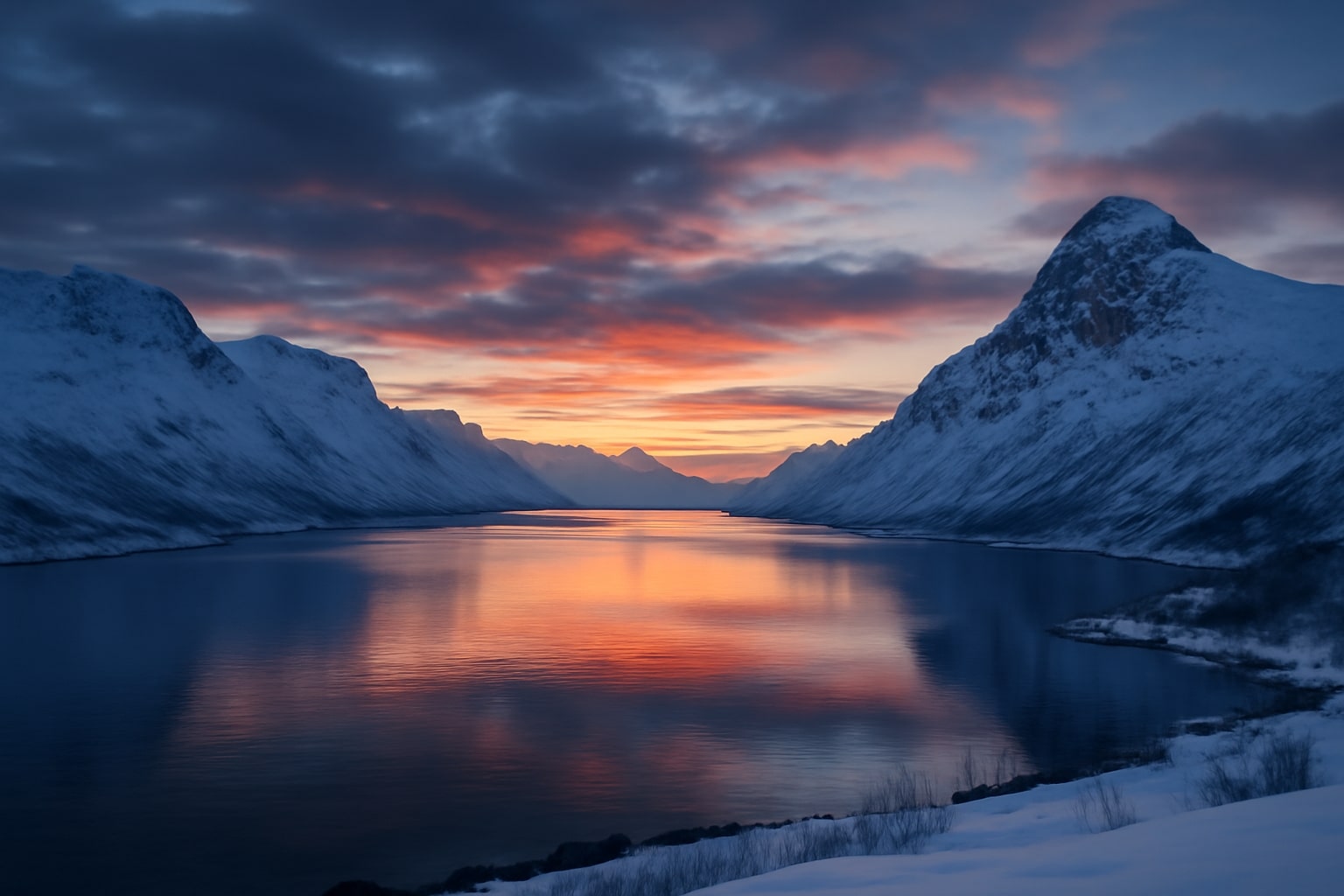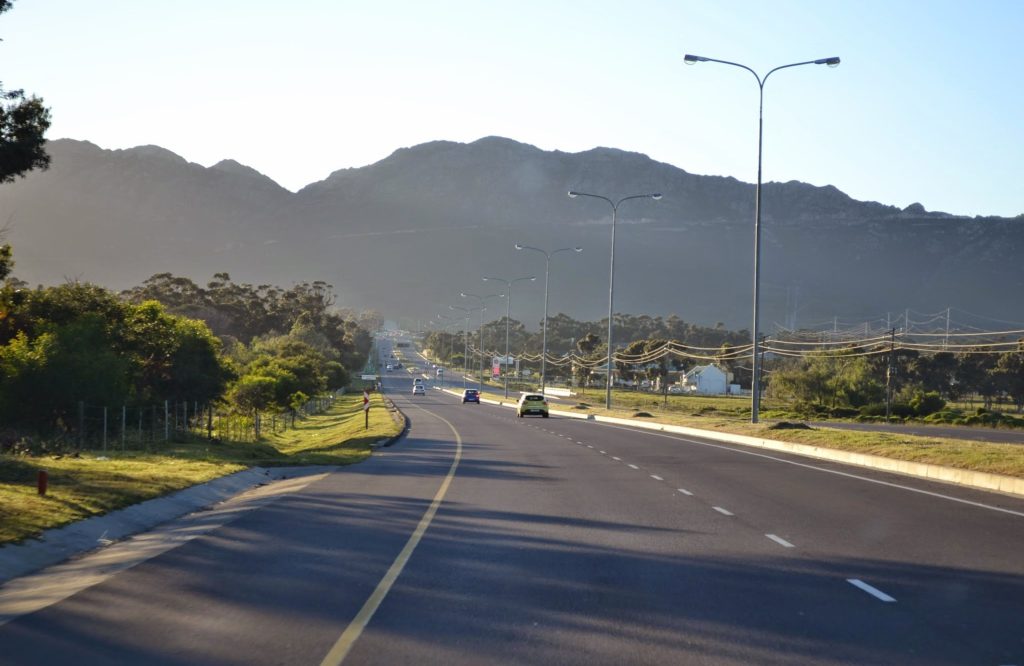Winter in Northern Norway is a time of profound and serene beauty, a period when the land is draped in snow and the sky puts on a display of ethereal light. This is the season of the Polar Night, a phenomenon where, in regions north of the Arctic Circle, the sun does not rise above the horizon for weeks on end. While this might sound like a time of unending darkness, the reality is far more magical. Instead of a traditional sunrise, the landscape is bathed in a soft, indirect twilight for several hours a day, a phenomenon that can be thought of as a continuous, day-long “polar sunrise.”
This unique period, often called the “blue hour,” paints the snow-covered mountains and coastal fjords in incredible shades of blue, pink, and deep orange. It is a time when the boundary between dawn and dusk blurs into a single, extended moment of breathtaking color. Chasing this polar sunrise is not about seeing the sun itself, but about immersing oneself in this gentle, otherworldly glow and witnessing the dramatic, colorful skies that defy the darkness. This experience, combined with the chance to see the spectacular Northern Lights, makes a winter journey to Northern Norway an unforgettable adventure.
The Magic of the Blue Hour
The Polar Night occurs because of the Earth’s axial tilt. During the winter, the northernmost parts of the planet are angled away from the sun, plunging them into a period without direct sunlight. In places like Tromsø, this lasts from late November to mid-January. However, this doesn’t mean total darkness. For a few hours around midday, the sun is close enough to the horizon that its light is scattered by the atmosphere, creating a beautiful and prolonged twilight. This is the “blue hour,” a time when a soft, calming blue light dominates the landscape.
This period is a photographer’s dream. The low, indirect light creates long shadows and highlights the textures of the snow and mountains, all while casting a serene and mystical ambiance over the scenery. On the southern horizon, the sky often glows with the warm colors of a sunrise and sunset combined, creating a stunning palette of yellow, orange, red, and purple that reflects magnificently on the calm waters of the fjords and the pristine snow. It’s a subtle yet powerful display of nature’s artistry, offering a unique and peaceful viewing experience.
Tromsø: Gateway to the Arctic Light
Known as the “Capital of the Arctic,” Tromsø is one of the best and most accessible places to experience the Polar Night and its captivating light. The city is vibrant even during the darkest months, with cozy cafes and lights twinkling against the snowy backdrop. From late November to mid-January, the sun remains below the horizon, but the city is far from dark, with the midday twilight providing a few hours of magical, usable light for exploring.
This period of extended darkness also makes Tromsø a world-class destination for chasing the Northern Lights. With less daylight, the aurora can often be spotted earlier in the evening, sometimes dancing over the city itself. Visitors can take cable cars up to mountain ledges for panoramic views of the surrounding fjords and islands bathed in the soft polar glow, creating a truly immersive Arctic experience. The city even celebrates the official return of the sun in late January, an event that marks the end of the Polar Night.
The Lofoten Islands: A Dramatic Coastal Canvas
For a truly dramatic setting, the Lofoten Islands are unparalleled. This archipelago is famous for its stunning landscape, where jagged, snow-covered peaks rise directly from the sea. During the Polar Night, this dramatic scenery becomes the perfect canvas for the soft colors of the polar sunrise. The tranquil waters of the fjords perfectly mirror the pink and orange hues in the sky, creating breathtaking reflections that are a hallmark of a Lofoten winter.
The quiet, idyllic fishing villages, with their traditional red cabins (rorbuer) dusted in snow, add to the charm and provide a cozy base for exploration. The low angle of the winter light accentuates the sharp relief of the mountains, making for spectacular photographic opportunities. As in other parts of Northern Norway, the extended darkness offers prime conditions for viewing the aurora borealis, with the added magic of seeing the lights reflected in the surrounding sea.
The North Cape: Light at the Edge of the World
For those seeking a sense of true wilderness and isolation, journeying to the North Cape (Nordkapp) offers a profound experience. As one of the northernmost points in mainland Europe, it presents a stark, raw, and windswept landscape where there is nothing but the Arctic Ocean between you and the North Pole. Witnessing the delicate colors of the polar twilight in such a remote and powerful environment is a humbling and unforgettable experience. The Polar Night here is long, lasting from late November to late January.
Even further afield lies the Svalbard archipelago, a realm of ice, polar bears, and extreme Arctic beauty. Situated halfway between mainland Norway and the North Pole, Svalbard experiences the Polar Night for an even longer duration, from late October to mid-February. Here, the experience is less about the colorful twilight and more about the profound darkness and the ethereal, icy landscapes. It is the ultimate destination for adventurous travelers wanting to experience the true nature of the high Arctic in winter.



